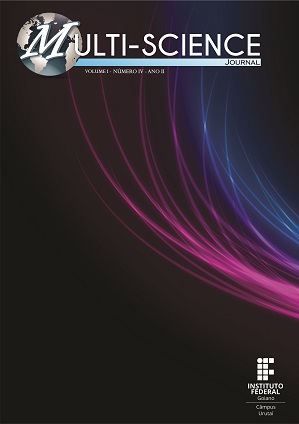Education and economic growth in Brazil of 2000s
DOI:
https://doi.org/10.33837/msj.v1i4.176Palabras clave:
Crescimento Econômico, Educação, PISA.Resumen
Brazilian economy was appointed, at the middle 2000s, as a bright promising economy in a global scale. Following the prognostic, Brazil was confirmed as an emergent nation along the years, and even on the harsh period of the international financial crisis of 2008, Brazil still follows his own positive growth path. Among others, some statistics were considerably important to demonstrate Brazil success, such as: GDP, trade balance, consumption, investments and further, launching Brazilian economy on the top 10 largest economies in the world. Despite these positive aspects, the Brazilian education did not follow the same path. While there were improvements in economic-social aspects, such as: reduction of poverty, income equality, social inclusion, housing, sanitation and others, the quality of primarily education did remained in a lower level than world average, according to PISA tests and specialized educational works. These two distinct features contribute to the existence of a paradox between: education and economic growth. The aims of this article is to present the positive and negative aspects of Brazilian economic growth path, pointing out achievements and fails. For then presents a critical view on education system using PISA and others reports. Paradoxically the level of Brazilian education has not become a barrier preventing economic growth, however the gap between education and economic progress would indicate an obstacle ahead. Indeed this will be a necessary challenge to the future of Brazilian government and society.Citas
BCB (2001). Boletim do Banco Central do Brasil, Brasilia, v.47, Relatorio Anual.
BATISTA JR., P. N. (1996). O Plano Real à Luz da Experiência Mexicana e Argentina. Estudos Avançados, São Paulo, No 28.
CINTRA, M. A. M. (2005). Suave Fracasso: a política macroeconômica brasileira entre 1999 e 2005 Novos Estudos – CEBRAP, São Paulo, 73.
FERREIRA, F. P. (2012). The Relationship Between Education and Economic Growth: A Full Review and Empirically Updated Case. (Essay for Master Degree of Economics). Université Paris 13 – Nord, France.
FILHO, F. H. B. and PESSÔA, S. A. B. (2010). Educação e Crescimento: O que a Evidência Empírica e Teórica Mostra? Revista EconomiA.
FILMER, D., HASAN, A. and PRITCHETT, L. (2006). A Millenium Learning Goal: Measuring Real Progress in Education. Working Paper Number 97, Center for Global Development.
HANUSHEK, E and WOESSMANN, L. (2009). Do Better Schools Lead to More Growth? Cognitive Skills, Economic Outcomes and Causation. NBER Working Paper, No 14633.
IBGE (2013). Séries Estatísticas & Séries Históricas. Disponível em http://seriesestatisticas.ibge. gov.br
IEA (2012). International Association for the Evaluation of Education Achievement ⎥ www.iea.nl No. 40.
IMF (2012). World Economic Outlook Database, site: http://www.imf.org/external/pubs /ft/weo/2012/02/weodata/index.aspx
IPEA (2010). Brasil em Desenvolvimento: Estado, Planejamento e Políticas Públicas. Instituto de Pesquisa Econômica Aplicada – Brasilia.
KALDOR, N (2010). Causes of the slow rate of economic growth of the United Kingdom. In: Targetti, F.; Thirlwall, A. P. (Org.). The essential Kaldor. New York: Holmes & Meier Publishers, Inc. 1989. In IPEA. Brasil em Desenvolvimento: Estado, Planejamento e Políticas Públicas / Instituto de Pesquisa Econômica Aplicada – Brasilia.
KEYNES, J. M. (1985) A Teoria Geral do Emprego, Juro e Moeda: Inflação e Deflação, - 2 Ed. - São Paulo: Nova Cultural.
OECD (2009). PISA 2009 Technical Report, PISA, OECD Publishing (doi: 10.1787/97892641 67872-en)
______ (2013). OECD Statistics, (site: http://stats.oecd.org/)
PALLEY, T. I. (2011). The Rise and Fall of Export-led Growth Working Paper No. 675, New America Foundation, Levy Institute.
PENN WORLD TABLE 7.1 (2011). Center for international comparisons of producton, income and prices of University of Pennsylvania.
PRATES, D. M. A (2007). Alta Recente dos Preços das Commodities. Revista de Economia Política, vol. 27, No 3 (107), pp. 323-344.
PRITCHETT, L. (2010) Where Has All Education Gone? The World Bank Economic Review, Vol. 15, No. 3, 367-391.
Publicado
Cómo citar
Número
Sección
Licencia
Authors who publish in this journal agree to the following terms:
a) The Authors retain the copyright and grant the journal the right to first publication, with the work simultaneously licensed under the Creative Commons Attribution License that allows the sharing of the work with acknowledgment of authorship and initial publication in this journal.
b) Authors are authorized to assume additional contracts separately, for non-exclusive distribution of the version of the work published in this journal (eg, publishing in institutional repository or as a book chapter), with acknowledgment of authorship and initial publication in this journal.
c) Authors are allowed and encouraged to publish and distribute their work online (eg in institutional repositories or on their personal page) at any point before or during the editorial process, as this can generate productive changes, as well as increase impact and citation of the published work.

